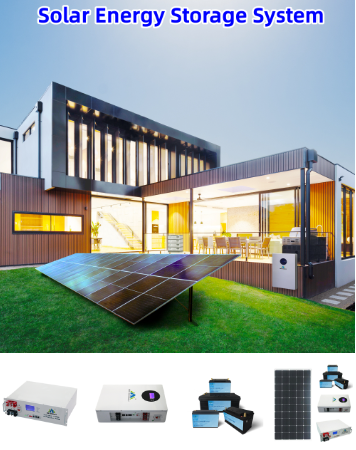Choosing the right battery for your solar power system is crucial for maximizing efficiency, reliability, and longevity. Start by understanding your energy needs.
Uses of batteries
Calculate your daily energy consumption by examining your electricity bills or using an energy monitor. This will help you determine your peak demand periods and ensure your battery can handle these times without running out of power. Also, decide if you need the battery for backup power during outages or solely for storing excess solar energy, as backup requirements may necessitate a larger capacity.
Different batteries
Next, familiarize yourself with the different types of batteries. Lead-acid batteries, such as flooded lead-acid, are economical but require regular maintenance and ventilation due to off-gassing. Sealed lead-acid batteries (AGM and Gel) are maintenance-free and safer but come at a higher cost. Lithium-ion batteries, specifically Lithium Iron Phosphate (LiFePO4) and Lithium Nickel Manganese Cobalt Oxide (NMC), are known for their high efficiency, long lifespan, and safety, making them ideal for residential and commercial solar systems despite their higher initial cost. Flow batteries, like Vanadium Redox Flow, offer scalability and long life, suitable for large-scale energy storage, but they are more expensive and complex to install.
When Choose according to actual needs
evaluating batteries, consider key performance metrics such as capacity, power output, depth of discharge (DoD), round-trip efficiency, and cycle life. Capacity, measured in kilowatt-hours (kWh), indicates the total amount of energy the battery can store. Ensure the battery has enough capacity to meet your energy needs during periods of low sunlight. Power output, measured in kilowatts (kW), shows the maximum amount of power the battery can deliver at one time, ensuring it meets your peak power demands. A higher DoD allows you to use more of the battery’s capacity without affecting its lifespan, while higher round-trip efficiency means less energy loss during the storage process. Batteries with a higher cycle life will last longer, providing better value over time.
Environmental factors also play a significant role. Consider the battery’s performance in different temperature ranges, as some batteries, like lithium-ion, perform better in a wider range of temperatures compared to lead-acid batteries. Assess the physical space available for battery installation, as lithium-ion batteries are more compact, while lead-acid and flow batteries may require more space and specific installation conditions.
Financial considerations are essential when choosing a battery. While lead-acid batteries have a lower upfront cost, lithium-ion batteries often provide better value over time due to their longer lifespan and higher efficiency. Research available incentives, rebates, or tax credits for energy storage systems in your area, as these can significantly reduce the overall cost of your battery system.
System compatibility
Lastly, ensure the battery system is compatible with your existing solar panels and inverter. Some batteries come with integrated inverters, which can simplify installation. Consider whether the battery system can be easily expanded to meet future energy needs, as modular systems allow for additional capacity to be added as needed.
In conclusion, selecting the right battery for your solar power system involves understanding your energy needs, battery types, performance metrics, environmental factors, financial considerations, and system compatibility. By considering these factors, you can choose a battery that maximizes the efficiency and reliability of your solar power system, ensuring a sustainable and cost-effective energy solution for years to come.


